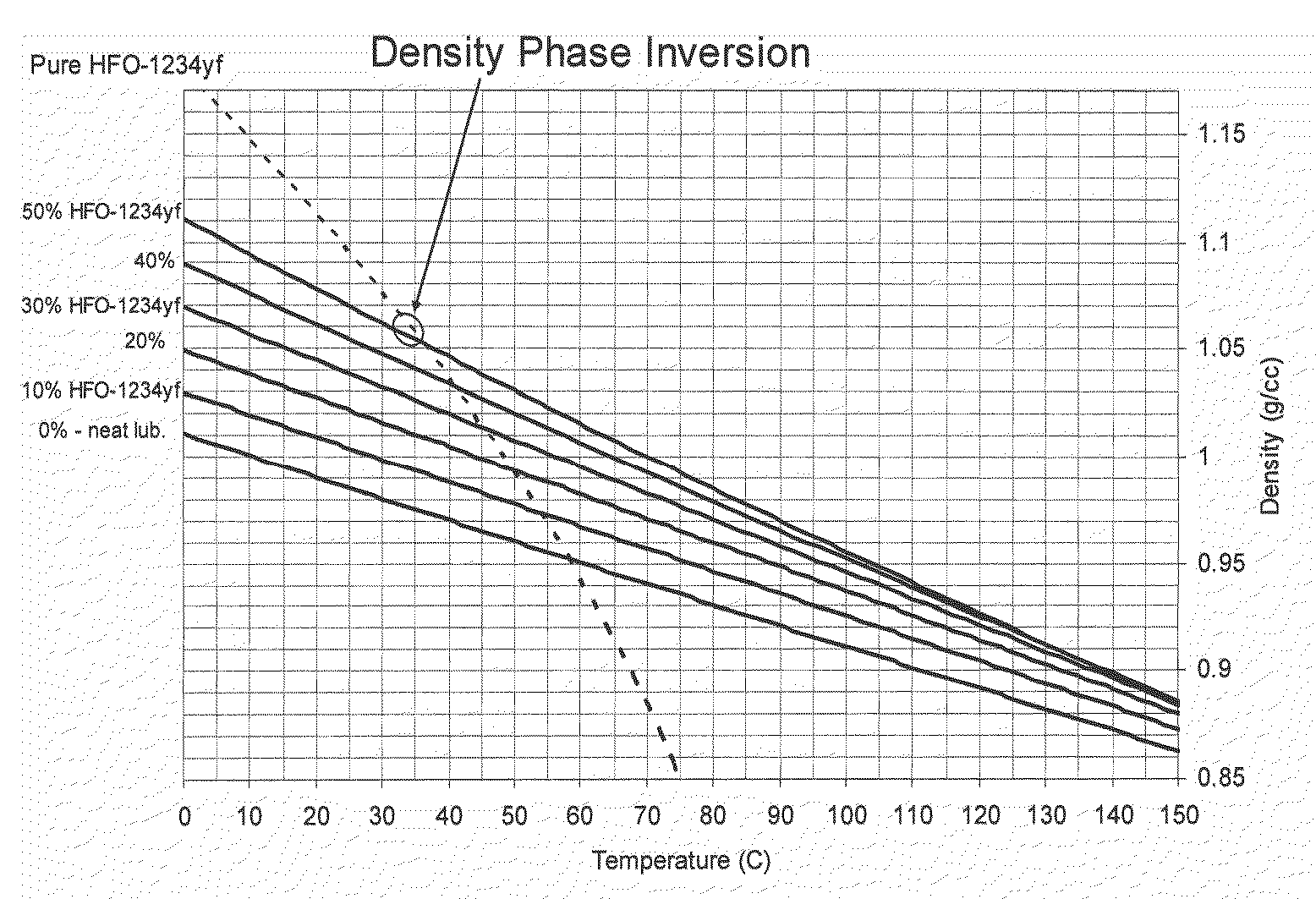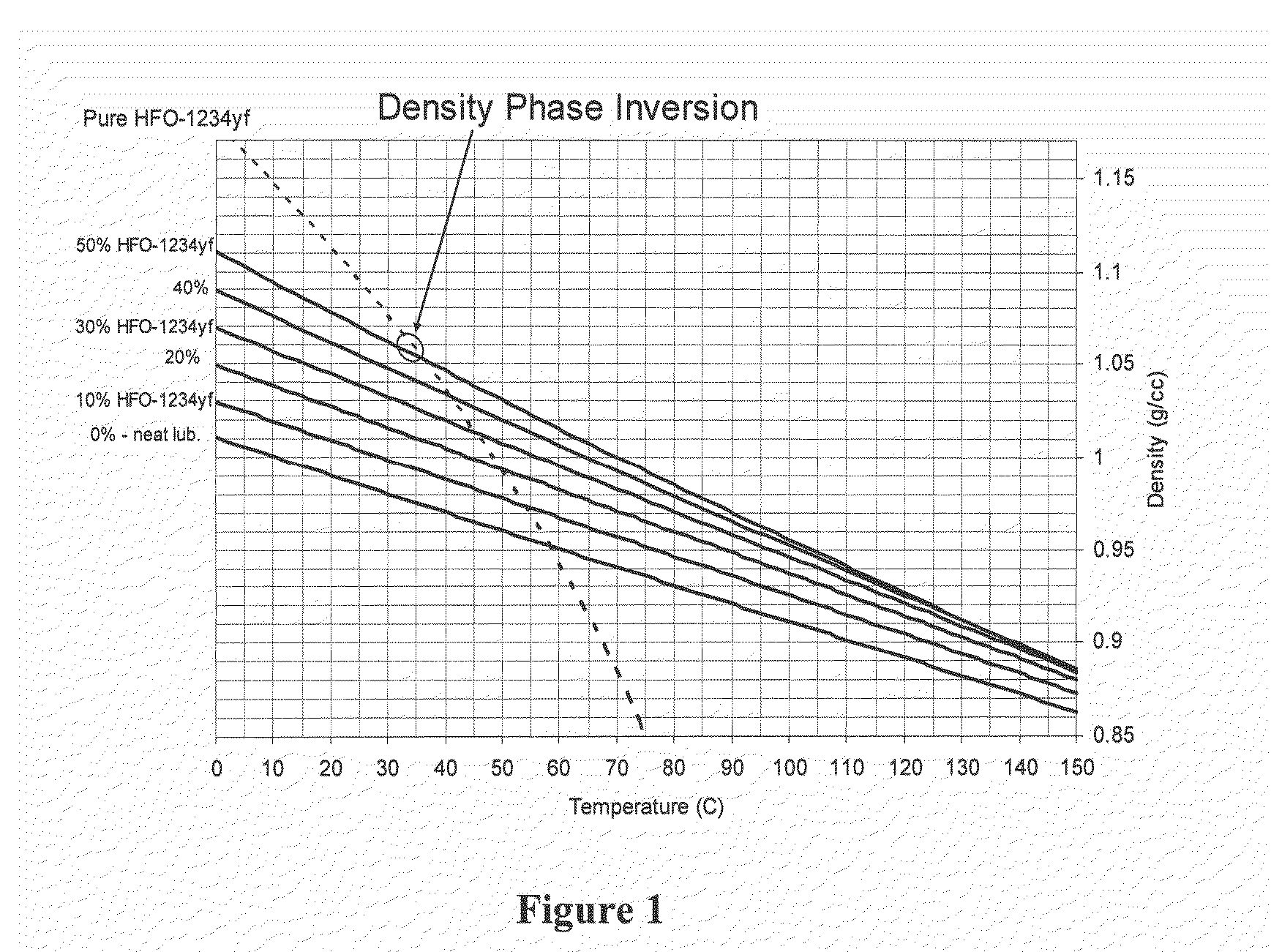Method for selecting lubricants for heat pumps
- Summary
- Abstract
- Description
- Claims
- Application Information
AI Technical Summary
Benefits of technology
Problems solved by technology
Method used
Image
Examples
example 1
[0044]A calorimetric performance test system using a full automotive air conditioning system utilizing production heat exchangers, lines and compressor was run using PAG RL897 as lubricant and HFO-1234yf as refrigerant. There were no oil return problems. This was because of the surprising emulsion like behavior of the refrigerant / oil mixture. This is due in part to the similarity in density as shown by the inversion in density.
example 2
[0045]A circulation loop was constructed to investigate the charge concentration of the loop compared to the circulating composition at various temperatures for an Idemitsu PAG 46PS / HFO-1234yf mixture. The apparatus was constructed such that a large reservoir was drained slowly from the bottom and the liquid was pumped and returned to the top of the reservoir. The pumping rates were regulated to traditional automotive system refrigerant flow rates from 5 to 60 g / sec and the large reservoir was used to simulate an worse case high pressure side liquid receiver. The results are shown in Table 1. For temperatures less than the phase inversion temperature (34° C.) the lubricant-rich phase floats on top of the refrigerant-rich phase before the circulation is started. For flows greater than 15 g / sec, the turbulence in the reservoir is high enough to create a stable emulsion and the circulation concentration is the same as the charged concentration; while even for low flow, the circulating ...
example 3
[0047]FIGS. 1 and 2 show the densities of constant concentrations of HFO-1234yf with two different polyalkylene glycol lubricants, Denso ND 8 oil and Idemitsu PAG 46 PS, respectively. While the ND 8 oil and the 46PS lubricants are similar in type classification and viscosity grade, the base molecules for which the final lubricant product is constructed are different. The density curves were experimentally determined by mixing a constant weight percentage of HFO-1234yf with lubricant and measuring the mixture liquid density over the range of temperatures from 0° C. to 150° C. This was repeated for each lubricant—refrigerant ratio progressing from pure lubricant up to 50% HFO-1234yf. For both lubricants at the 50% refrigerant-lubricant blend, the liquid solution becomes immiscible and splits into fluoroalkene rich and fluoroalkene lean phases. This concentration and for concentrations greater than 50% fluoroalkene this mixture exhibits a density phase inversion where the fluoroalkene ...
PUM
 Login to View More
Login to View More Abstract
Description
Claims
Application Information
 Login to View More
Login to View More - R&D
- Intellectual Property
- Life Sciences
- Materials
- Tech Scout
- Unparalleled Data Quality
- Higher Quality Content
- 60% Fewer Hallucinations
Browse by: Latest US Patents, China's latest patents, Technical Efficacy Thesaurus, Application Domain, Technology Topic, Popular Technical Reports.
© 2025 PatSnap. All rights reserved.Legal|Privacy policy|Modern Slavery Act Transparency Statement|Sitemap|About US| Contact US: help@patsnap.com



